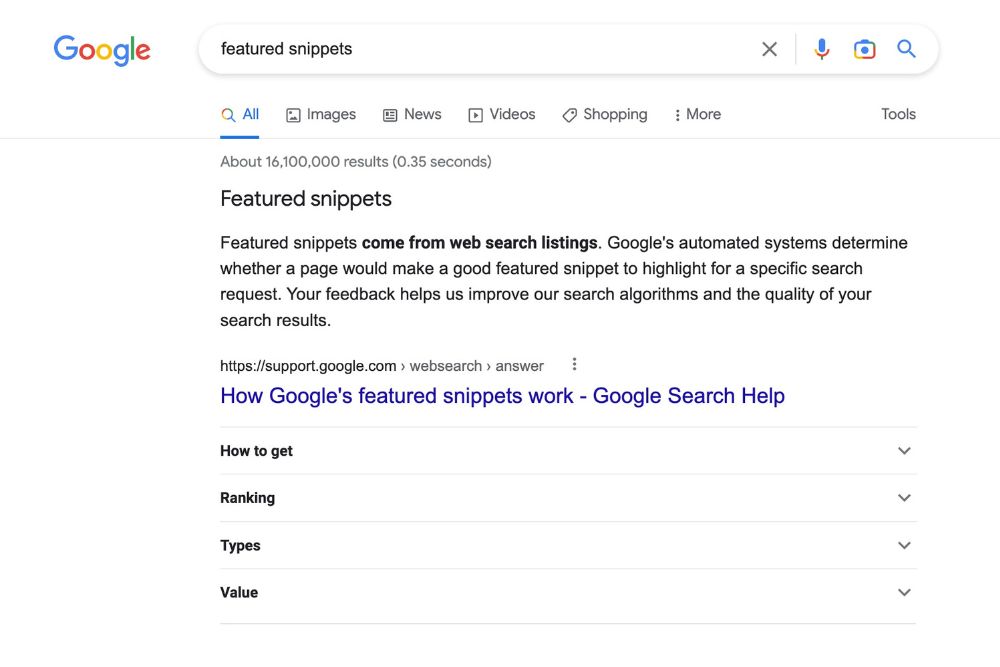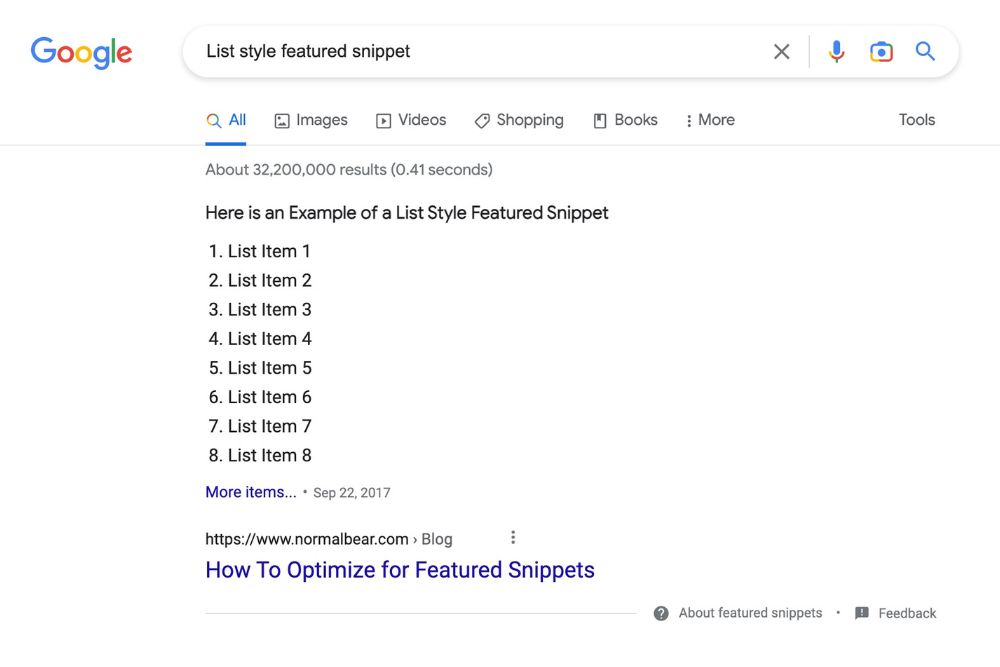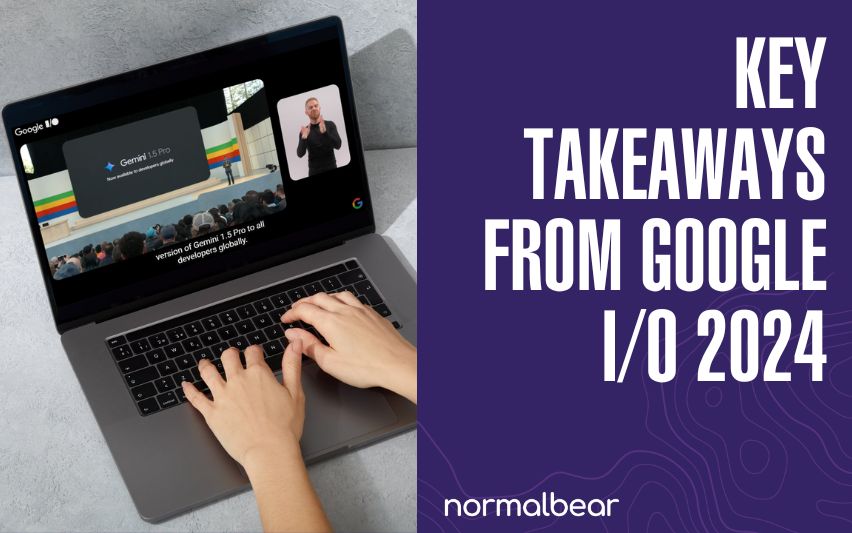Featured snippets are the crown jewel of an effective search engine optimization strategy. They allow your page to leap to the top of the rankings even if its organic ranking position would normally place it farther down the list. In fact, marketers often call it “position zero” just to further emphasize how valuable a featured snippet can be.
In this article, we’ll discuss what featured snippets are and how they work. We’ll also provide some tips on how to optimize your website to increase the odds of it appearing in a featured snippet to help drive more traffic to your site.
What Are Featured Snippets?

If you’re not familiar with featured snippets, they’re the boxes that appear at the top of a search engine results page, just below the paid advertisements. They are intended to quickly answer a user’s query without the need to click through to a website. Instead of the simple title tag and meta description that other search results get, featured snippets can include up to two images, as well as additional text or even video.
Why Do Featured Snippets Matter?
The most obvious benefit of featured snippets is their high visibility. Aside from ads, they’re the first and most prominent result that users will see, and that translates directly into a higher click-through rate and a significant increase in traffic.
Furthermore, Google only bestows this coveted position on pages that it considers to be relevant and trustworthy, so featured snippets help establish your website as a credible, expert-level source of information, which can improve your brand authority in the eyes of visitors.
Types of Featured Snippets
There are currently four major types of featured snippets:
Paragraph Snippet
Paragraph snippets are by far the most common, comprising almost 70% of featured snippets. As its name suggests, paragraph snippets provide answers in the form of a brief summary paragraph averaging roughly 40 words and 250 characters in length.
List Snippet

List snippets, sometimes referred to as “listicle snippets,” provide information in either ordered or unordered lists. These types of snippets are common for searches with multiple answers, such as rankings, best-of lists, or top tips. They clock in at six items long and roughly 45 words on average.
Table Snippet
A relatively uncommon type of snippet, tables are usually reserved for results pages that deal with numerical information, such as sales data or other financial comparisons. Google does not generate tables automatically, so pages that do not include their own tables cannot be featured in a table snippet. On average, these snippets contain five rows divided into two columns.
Video Snippets
Video snippets are a relatively recent addition that allow users to view a relevant part of a YouTube video directly through the search engine results page without having to navigate to YouTube itself.
Video snippets are most commonly seen when searching for music videos, demonstrations, and movie trailers. The average runtime of a video snippet is just over six minutes.
Tips for Getting Google Featured Snippets

Now that you have a good idea of what featured snippets are, the million-dollar question is how you actually earn them for your own pages. While Google has the final say in what gets featured, the good news is there are plenty of practices you can adopt to improve your odds.
Choose Keywords Wisely
As with any effective SEO strategy, your first step should be keyword research. For featured snippets, in particular, long-tail keywords are much more likely to secure that top spot.
Most search engine queries begin with who, what, when, where, or why, so it’s no surprise that most featured snippets offer quick, to-the-point answers to those questions.
Use Supporting Imagery
In addition to text, snippets can include up to two images, so it’s a good idea to support your content with high-quality images if you want a better shot at getting featured. Pair your keywords with relevant, visually interesting pictures whenever possible. If they’re original images instead of stock photos, that’s even better.
Organize Your Content
Well-structured content is easier for both readers and search engines to digest, which is crucial if you’re aiming to sit at the top of the SERPs. Using a hierarchy of distinct headings and subheadings helps organize your content and make search engine indexing simpler, and it’s also a great opportunity to include relevant question keywords in your heading tags.
If you want to increase your website’s visibility and drive more traffic to your site, optimizing for Google-featured snippets is vital. At Normal Bear, we specialize in helping businesses like yours get the most out of their SEO efforts. Our team of experts has the knowledge and experience to identify the best opportunities for your website to appear in featured snippets and develop a strategy to make it happen. If you’re interested in learning more, schedule a discovery call with us today!







